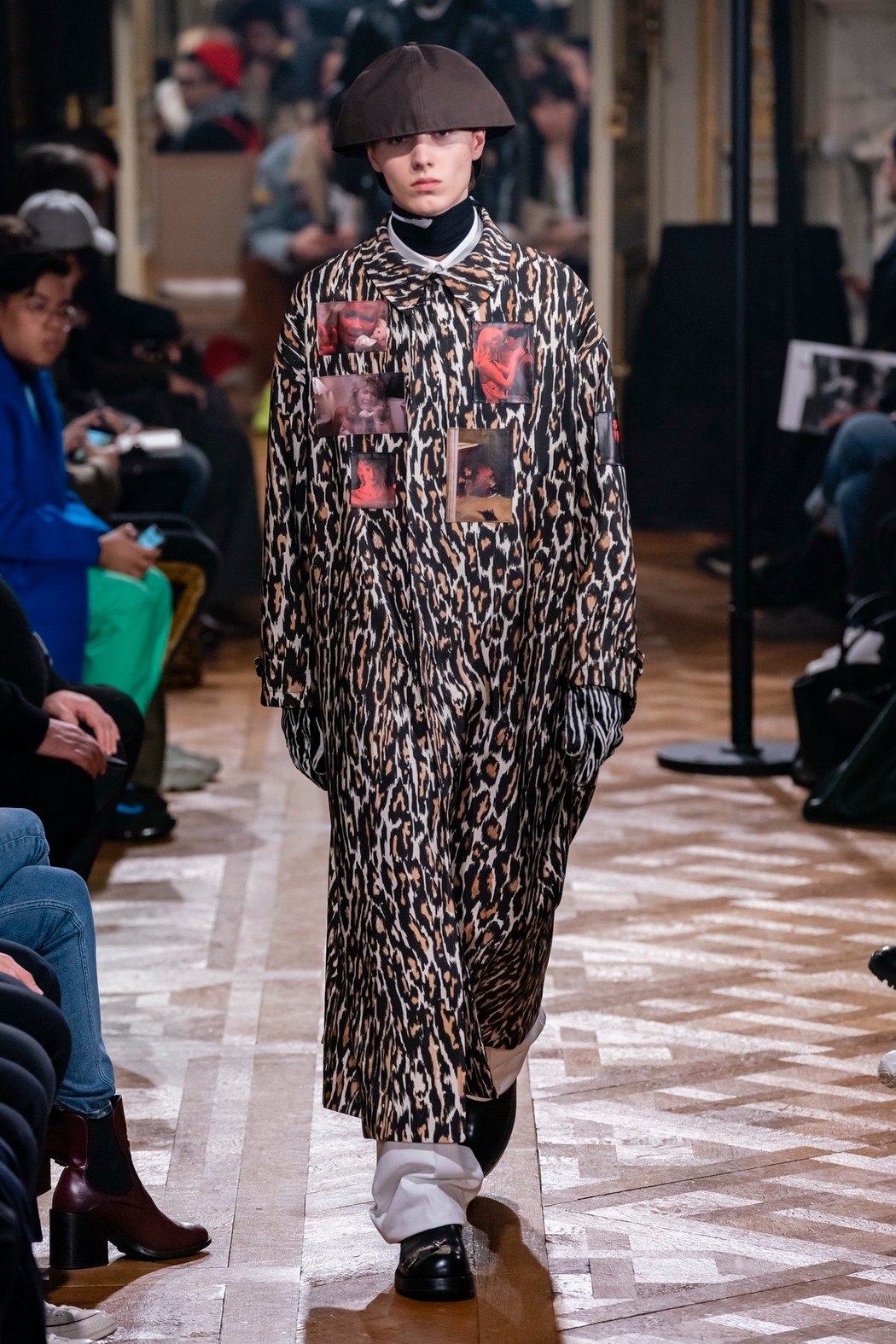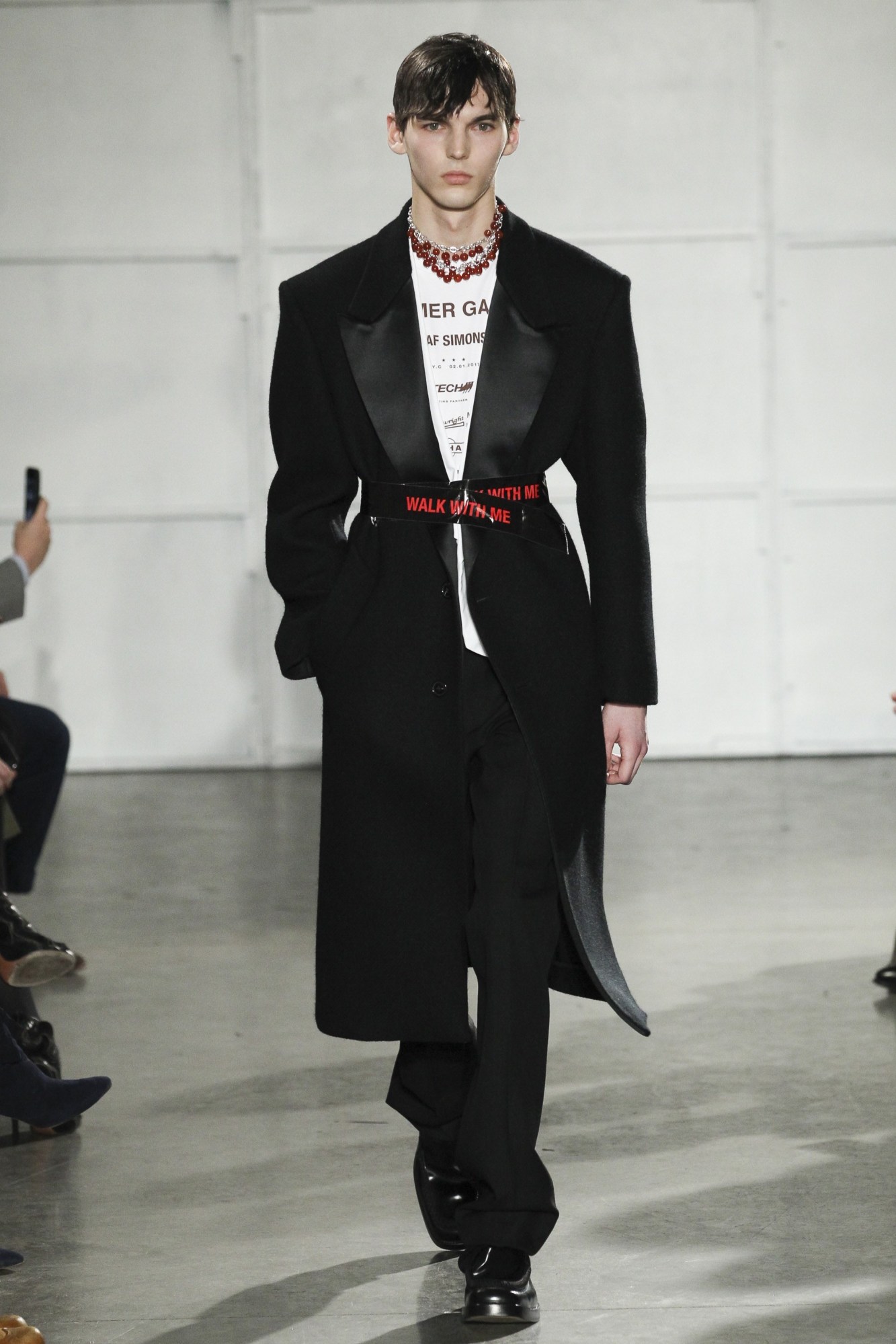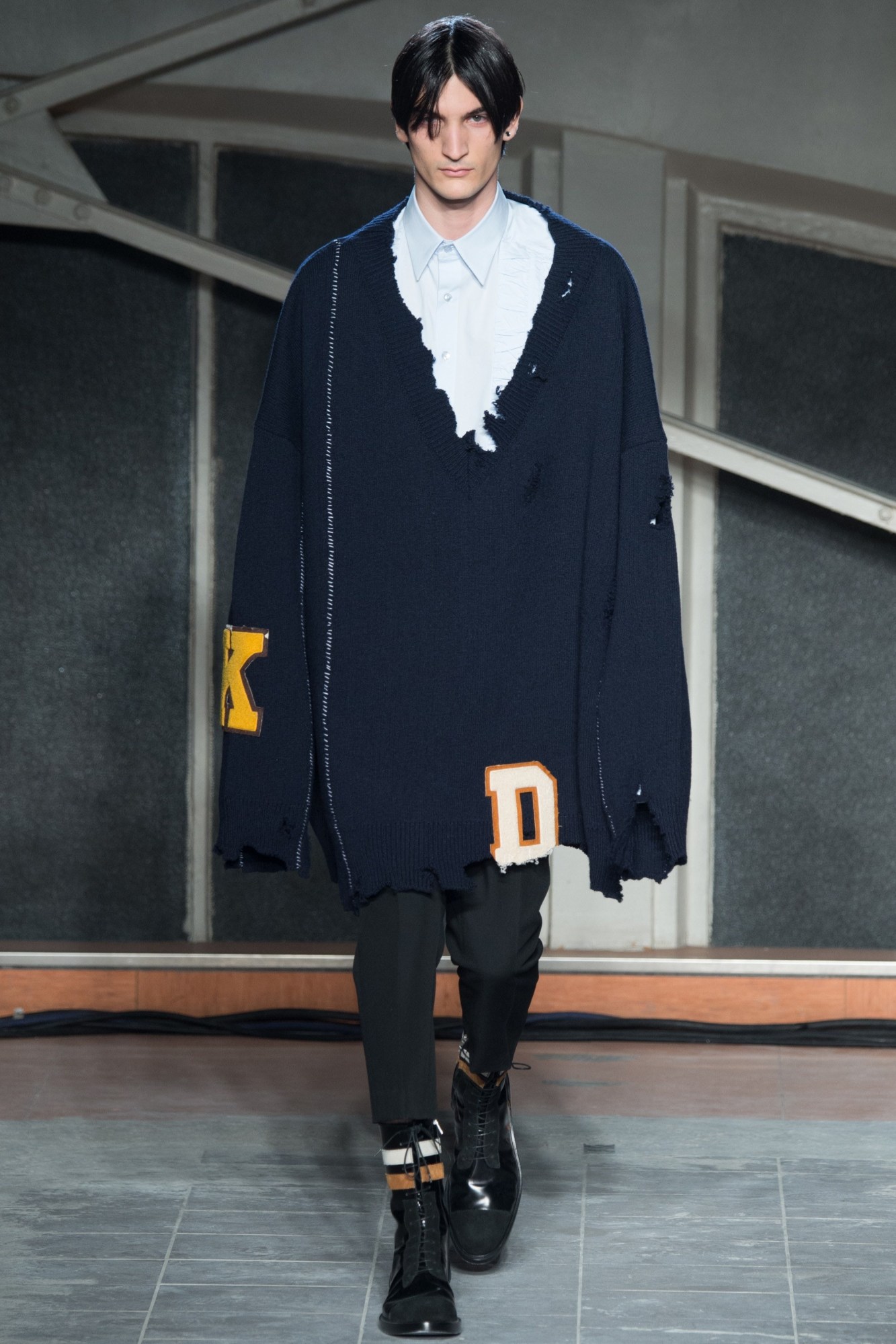The invite was the colour of blue velvet and depicted a crying Laura Dern. Following hot on the heels of Raf Simons’s departure from his post at Calvin Klein, it seemed less like an invite than a statement of intent. The show, heavily inspired by the films of David Lynch, was at times lit like The Slow Club or Silenco. Greatcoats, so large as to look borderline-insane, were appliqued with stills from Lynch films, or appended with D-rings and dangling cherries. The idea was to have significant totems “you could hang on yourself so you create your own aesthetic,” Simons told the press backstage after the show. At first, I read this as suggesting that you “hang yourself so you create your own aesthetic.” How uncanny and extreme, I thought; then noticing my error, how Lynch. Look twice, and what was at first seen to be violent proves to be banal: a thing unsettling because it looks like, or almost like, something else.

To date, Raf Simons has made reference to three of the director’s projects, Blue Velvet, Twin Peaks, and Wild at Heart, and each time what has remained of their influence is something like a primal scream. For autumn/winter 19, he appropriates the scene from Wild at Heart where Diane Ladd, psychotic beyond reason, paints her face with lipstick, and the moment in Blue Velvet where her real-life daughter Laura Dern — faced with the prospect of a cheating boyfriend, and the rather more alarming reality of a naked Isabella Rossellini — pulls the familiar, memetic crying face made popular by social media, and made terrifying by Lynch’s last, best film, Inland Empire. For his autumn/winter 16 menswear show, he raided Twin Peaks for its all-American sweaters and varsity knits, and its rotten-ketchup-grimy-mustard colour palette, making the resulting clothes outsized, surreal — like something tailored for The Fireman. He claimed he did not know the show date happened to be Lynch’s birthday, although given his fastidiousness, this seems unlikely. Like Lynch, who once banned blue-coloured props from Twin Peaks, despite blue being his favourite colour, it is difficult to picture Simons ever losing his control.
“She’s dead,” Pete Martell says when he finds the shrouded corpse of Laura Palmer in Twin Peaks. “Wrapped in plastic.” Wrapping male and female bodies up in plastic with some regularity, Raf Simons is most interested in highlighting his models’ cool aliveness, their imperviousness to mess or surface damage. He is one of our greatest living designers, and perhaps the industry’s best and most rigorous interpreter of an especially stately, cinematic brand of horror. Often, he makes clothes that are voluminous, slick, wipe-clean, and cut into silhouettes as sharp as huntsman’s knives, which is to say that he makes perfect clothes for serial killers. For spring/summer 18, in a collection for Calvin Klein at least partly inspired by various women from iconic horror films, he nodded to a fictional murderess: Asami Yamazaki from Takashi Miike’s glorious and sick Audition, whose elbow-length rubber gloves were recreated in hot pink, and whose murderousness is itself another primal scream, aimed at the expectations of traditional heterosexuality. He’s dead; she’s wrapped in plastic. That collection, Simons said, was meant to be critique aimed at “the dream factory of Hollywood and its depictions of both an American nightmare, and the all-powerful American dream.”

No wonder, then, that he cites David Lynch as someone who is “always with [him].” What makes Raf Simons an ideal chronicler of the dying and decayed dream of America is his not being American, but Belgian — just like Andy Warhol, whose Death and Disaster paintings he used in that autumn/winter 16 show for Calvin Klein, and who was born Warhola to a Polish mother, he is documenting all of this death and disaster at a slight remove. (Lynch, like his acolyte Lana Del Rey, is so American that he begins to seem, too, like a tourist; his America is draggy, ersatz, true for being an exaggeration of the truth.) When Simons says that he does not want to show clothes, and that instead he wants to show the audience his attitude, it sounds like Lynch, too, insisting that he does not discuss his films because “the movies are the talking.” For Calvin Klein spring/summer 19, Simons let Jaws do the talking, and for his own menswear autumn/winter 18 show he drew on Christiane F: Wir Kinder vom Bahnhof Zoo, a lurid 80s movie about teenage drug addiction so hip-looking and punk that 19-year-old me, an idiot, once dyed my hair to match its heroin(e)’s.
The same season at Calvin Klein, he looked in part to Todd Haynes’s extraordinary environmental horror, Safe, in which Julianne Moore gives one of her best performances as a pale, suffocating and allergic-to-life housewife who acts as a mirror for her own bougie apartment: white, featureless, luxurious, vulnerable to dirt, to rot and mould. Where it might have made sense for Raf Simons to mine the perfect style of the pre-breakdown housewife, what interested him were the clothes that Carol White dons to protect herself from what she believes to be the toxicity of modern life. The condition she self-diagnoses with is “Multiple Chemical Sensitivity,” which is sometimes described as “20th Century Disease,” and which supposes that the by-products of capitalist living, of life in America’s cities or suburbs, can bring sufferers out in rashes, lay waste to their respiratory systems, kill them by degrees. How uncanny and extreme, and yes, how Lynchian. Raf Simons, fascinated by the darkest iconography, enamoured with the play between synthetic and organic, ugliness and loveliness, is as reliable a documentarian of his era’s sicknesses as his filmmaking hero.

